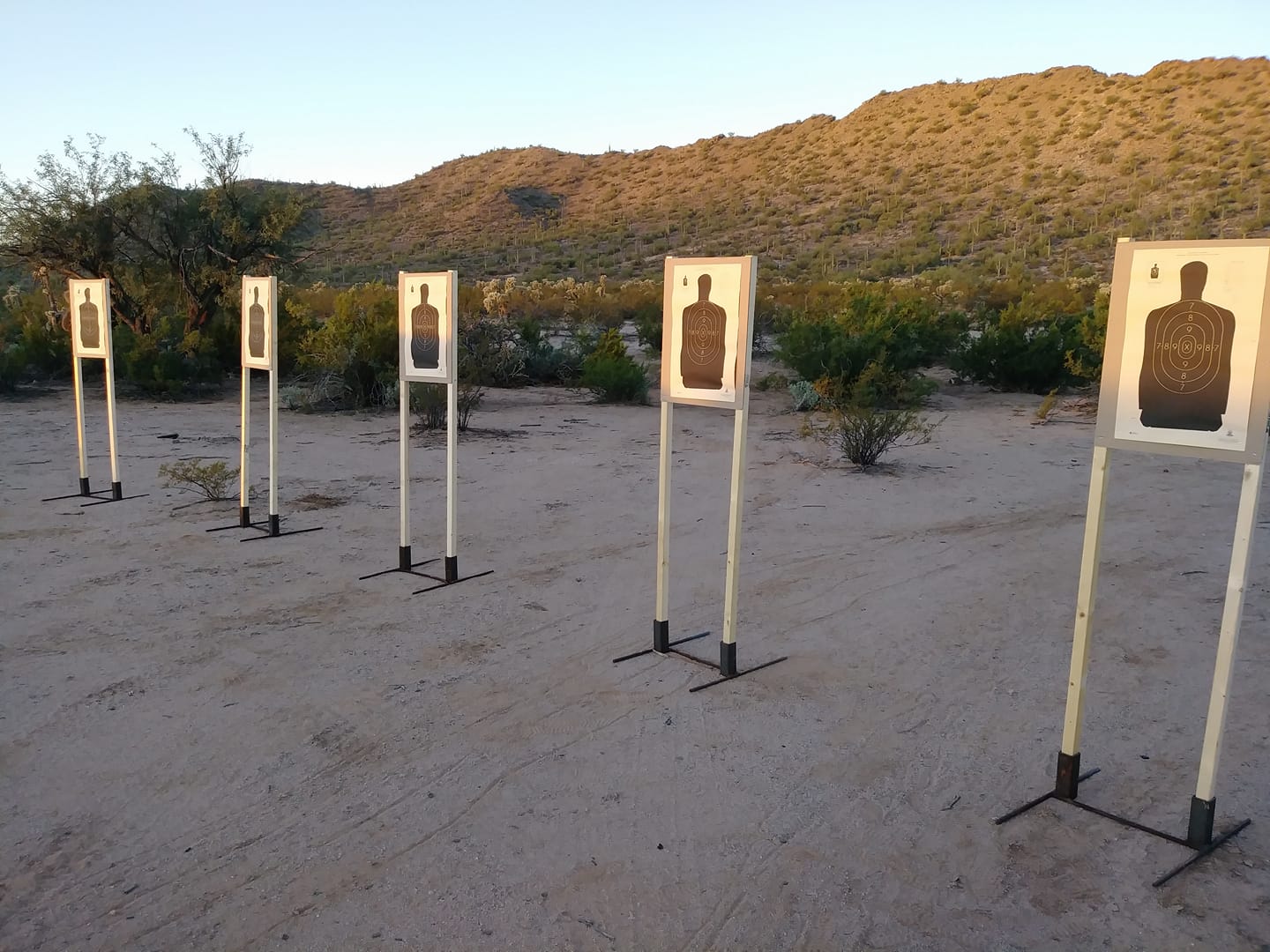What Distances Should You Practice At For Self Defense
This is a somewhat hotly debated topic on social media. In part because most keyboard warriors think that their way of practicing and their way of thinking could never be wrong.
In no way am I going to claim that the content of this article should be taken as the end-all-be-all of this subject. Every self-defense situation is very different and they should not be treated as if there is one and only one way to handle self-defense shootings.
I think many people would agree that the bulk of life-threatening confrontations range from 0 – 20 meters, or from 0 – 60 feet or so. This covers the range from someone grabbing you and/or a fight going to the ground, all the way to a bad guy in a bank lobby or convenience store or parking lot.
The active-shooter 50, 75, and 100-yard shots happen so infrequently that all I will say is… Do it a little, know you can, but I wouldn’t suggest using large blocks of your practice time on it.
0 to 3 feet…
The distances of 0 to 3 feet are far harder than the cool kids online would like to admit. Or they just think it’s uncool or easy to shoot at closer distances. This just highlights their lack of real-world experience and training.
If you are not used to the noise and concussive force of that muzzle blast coming back and hitting you directly in the chest, face, and sinuses, it can be very disorienting and even scary. This is something that only repetition can cure and will help you to think more clearly in such a situation.
This is an important range also because in many cases the bad guy has to actually grab or touch you in order to attack and/or control you. This is well within that 3 feet distance. Additionally, fistfights that turn into deadly altercations are also commonly within that 3 feet range.
Shooting from retention itself is also a skill to do safely and proficiently. Many things can and have gone wrong when shooting so close to your own body while attempting to fight off an attacker.

3 to 20 feet…
Keep in mind that these are not exact distances. The first could very well be 0 to 5 feet and the second being 5 to 12 feet. Again, it is all situationally dependent, but for the sake of text, there have to be separations somewhere.
The range of 3 to 20 feet is where I place the next distance group. I stopped at 20 feet based on measurements taken at random grocery stores and Wal-Marts. It was an average of 20 feet from any given cashier line and/or publicly accessible door to the point of reasonable cover or concealment to engage from. This is also generally the furthest distance I would ever have to shoot within the last three places I’ve lived, and many homes I’ve been in.
Unlike the 0 to 3 feet, 3 to 20 feet is when you not only have to keep your cool through your own panic but through everyone else’s panic and screaming as well. This poses its own issue that is normally not able to be legally replicated. I would call this the sweet spot to practice in. Being ultra proficient inside of this range means muscle memory will take over when dealing with the stress of everyone else around you, and seeking your own cover or concealment.
A thing to keep in mind from 0 to 20 feet. The difficulty of engaging multiple targets as you get closer to them goes up dramatically. Unlike from 20 feet and out where the difference is more negligible. This is due to the degrees at which you must shift your sights and possibly body.

20 feet to 50/60 feet….
In the real world, 20 feet is about the distance in most situations that a person could walk before running into something hard. Next time you’re in a parking lot look to see how far you would have to go to clear a shooter and engage from relatively safe cover or concealment? it’s usually a parking spot or two. Same when you go indoors. Where is the nearest structural wall inside the restaurant you’re reading this in while waiting for your food? In the office, where is a decently safe spot to engage someone from? Walking down the street? Etc…Etc…. Yes, somewhere between 20 and 60 feet there is a dumpster, wall, vehicle, or something reasonably solid to hide behind in case to need to engage a threat.
Therefore, if you are able to add some sort of shooting barrier when practicing at these distances, that helps a lot. It is also at these distances where your engagement is not generally as fast-paced and you’re going to probably be able to take a breath before your shot(s).
I am fully and painfully aware that there are going to be some responses to this that equate to the super-intelligent response of “nuh uh,” but as I said, every situation is different.

